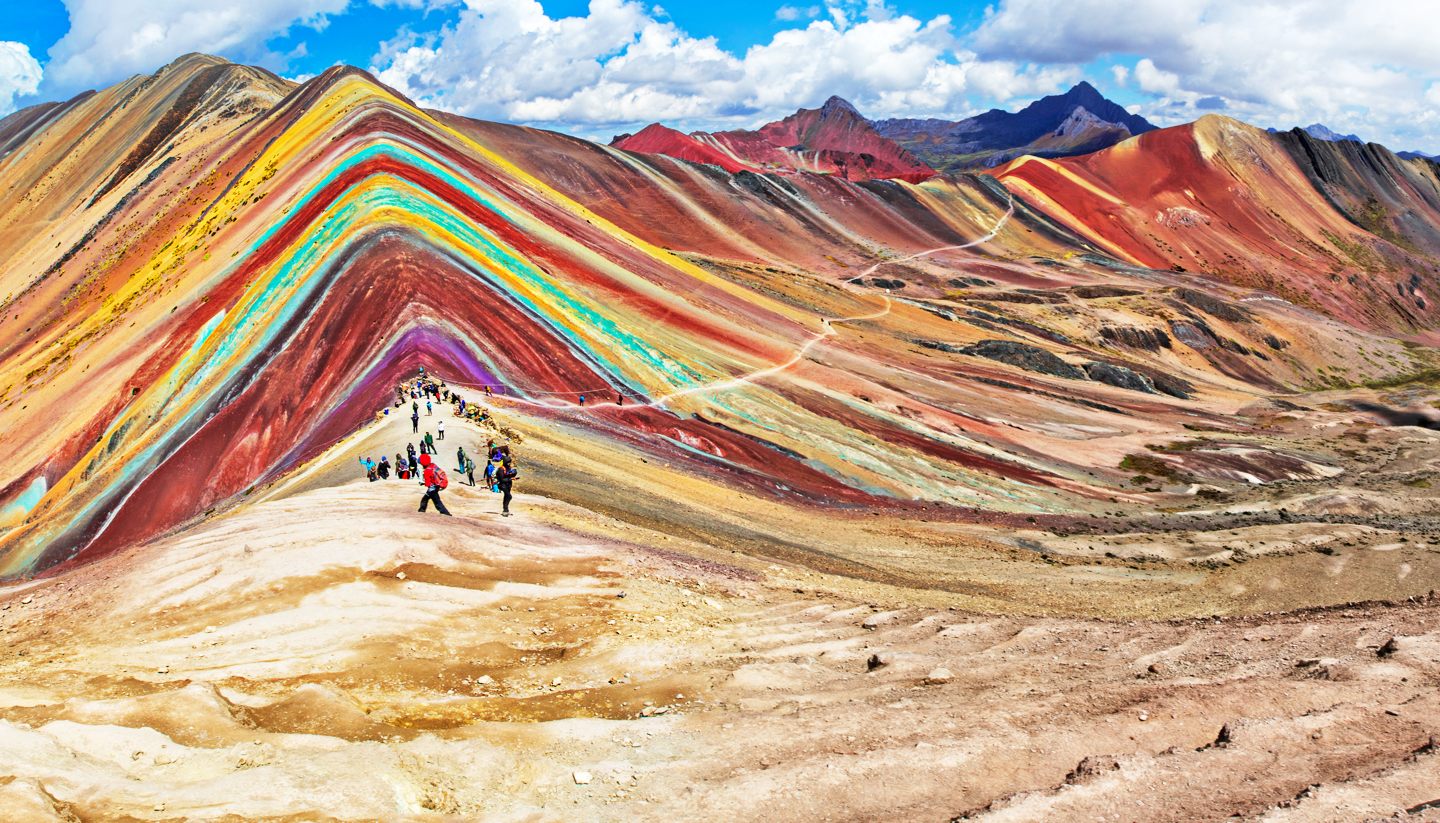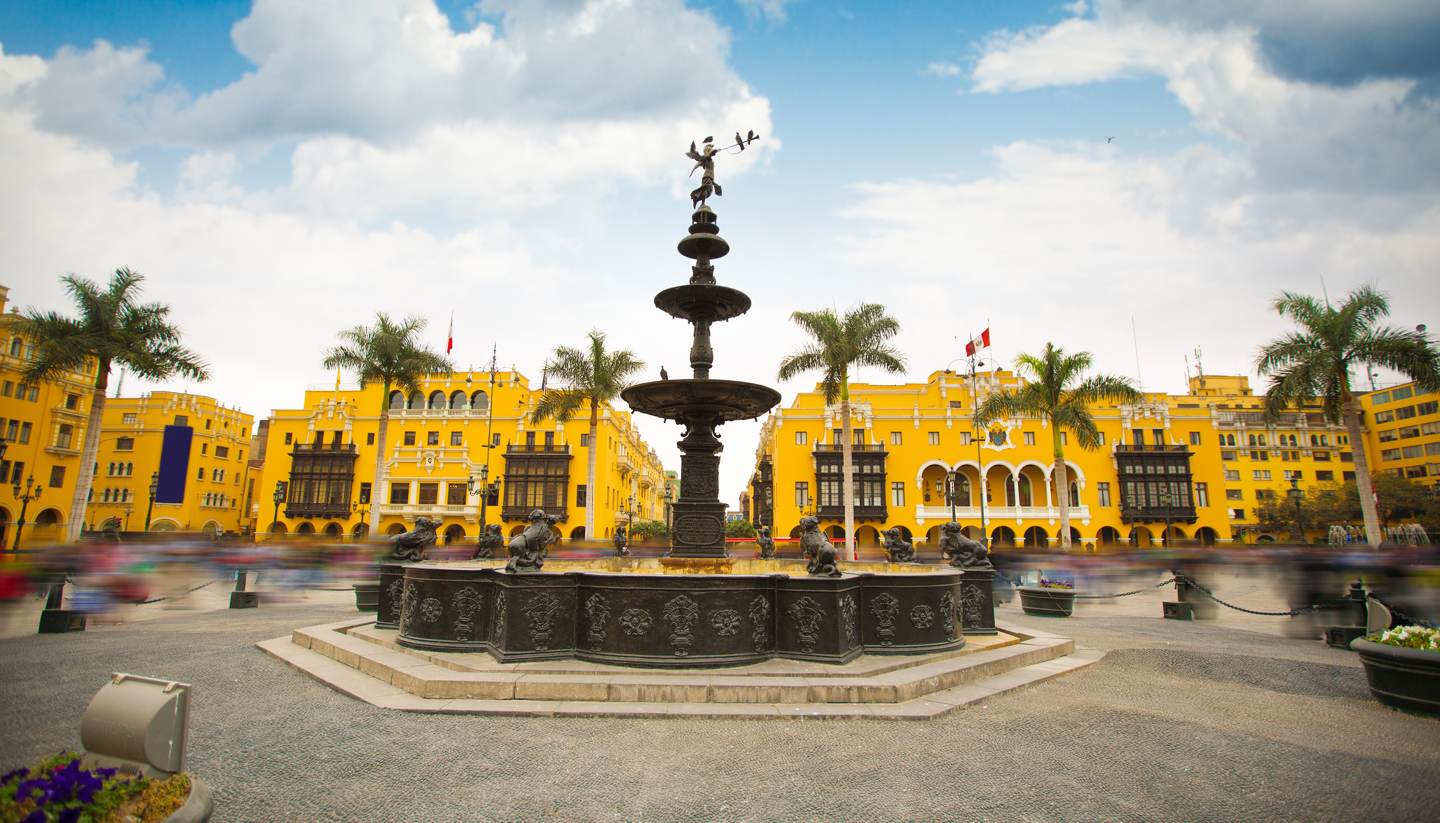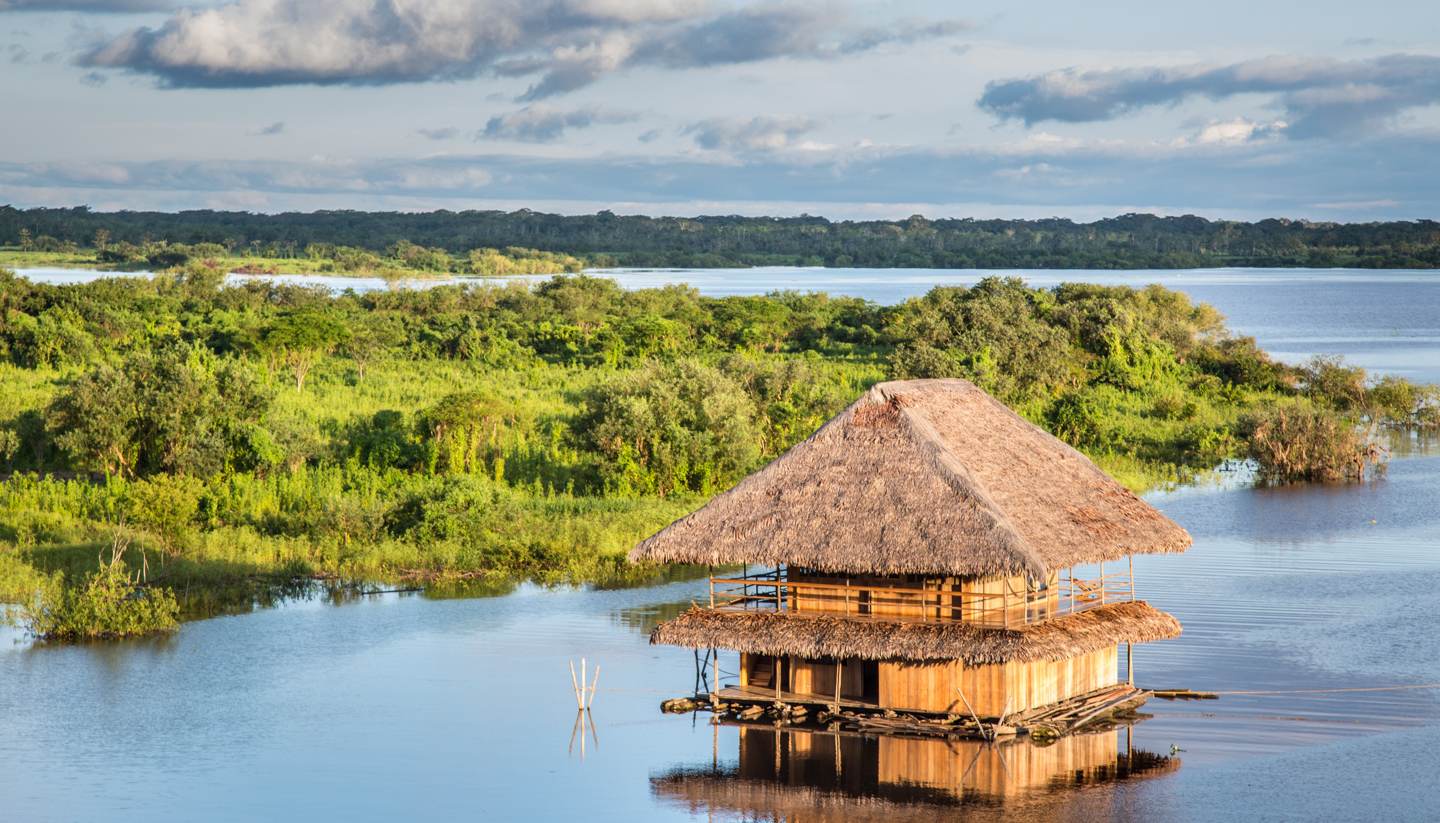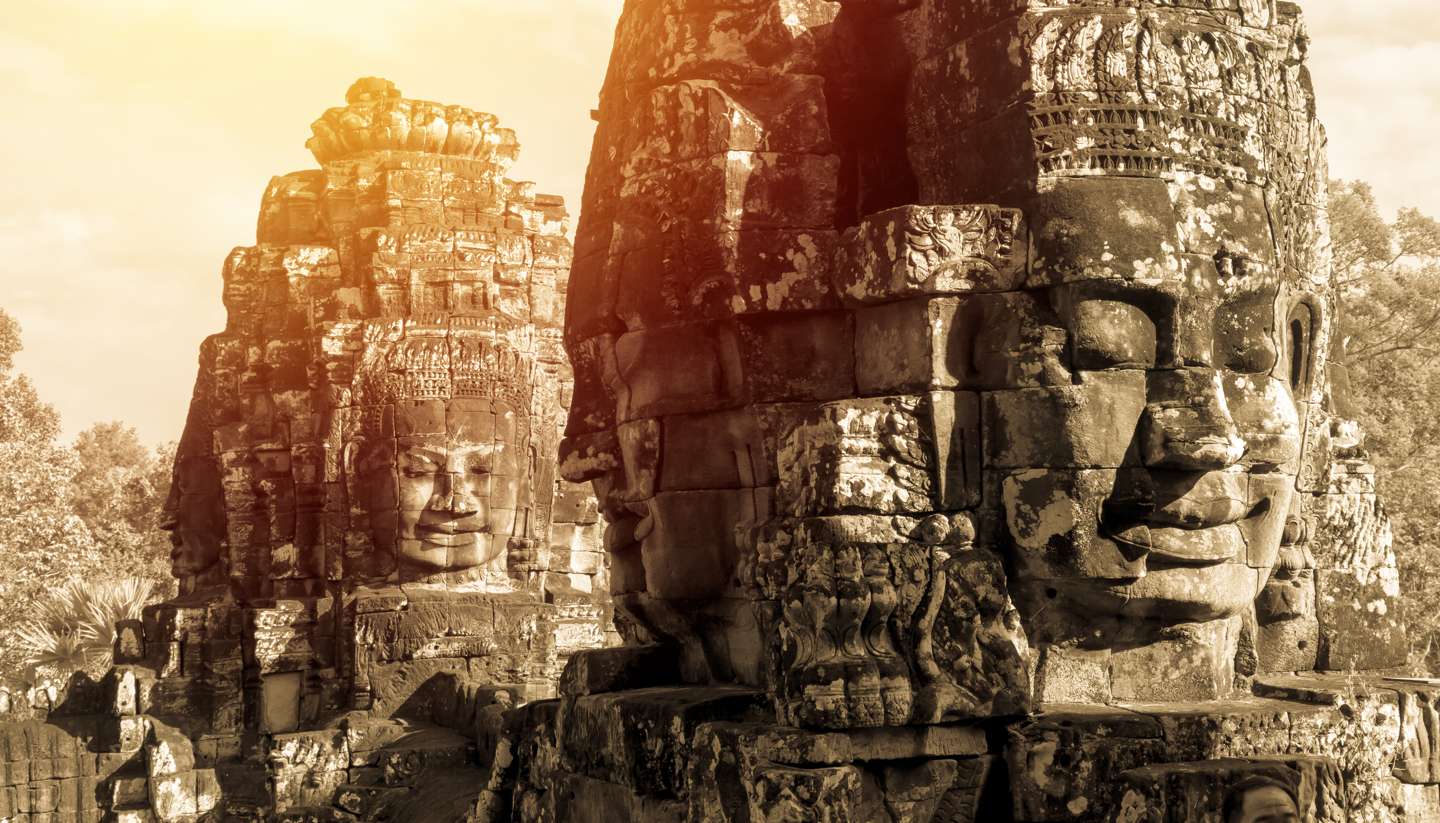Getting Around Peru
Air
LA (www.lan.com), Avianca (www.avianca.com) and LC Perú (www.lcperu.pe) handle virtually all domestic air traffic. Routes link Lima to Andahuaylas, Arequipa, Ayacucho, Cajamarca, Chiclayo, Cusco, Huánuco, Iquitos, Juliaca-Puno, Piura, Pucallpa, Puerto Maldonado, Tacna, Tarapoto, Trujillo, Tumbes and other cities. Flights to Huaraz are occasionally offered. For information on internal flights, contact the Peruvian Corporation of Airports (Corpac) (www.corpac.gob.pe).
When travelling around Peru, you have to make a decision: time or money? The bus from Lima to Cusco can take over 24 hours instead of a flight of about 1 hour 30 minutes, but it will be a fraction of the price. If taking a shorter trip to Peru, flights will leave you a lot more time at your destination.
You can book in advance from outside the country, or a few days in advance through local tour operators for not much more money. Some flights (of lower prices, and particularly with LAN) are for Peruvians only – if you purchase them be prepared to pay a fine.
Air passes
The oneworld Visit South America Airpass (www.oneworld.com) has a range of destinations in Peru, including Piura, Chiclayo, Trujillo, Iquitos, Lima, Cusco, Arequipa, Tarapoto, Puerto Maldonado and Juliaca. Prices depend on the amount of flight zones.
Departure tax
Included in the air fare.
Air Note
Domestic flight schedules are often subject to last minute change – try to confirm that your flight is leaving at the time stated on your ticket before you head to the airport.
Road
Main roads in Peru are, at least, reasonably paved; others can range from extraordinarily bumpy to impassable after landslides. Landslides are frequent in the mountains during the rainy season (December to March), making for slow travel and closed roads. Take care driving on the mountain roads, which are narrow, windy and above all high up. Local drivers who know the roads well go like the clappers, but if you try it you may well go off a cliff.
Side of the road
RightRoad Quality
Many mountain roads are unpaved, and almost all are badly potholed. Landslides are frequent in the mountains during the rainy season (December to March), making for slow travel.
Road Classification
The well-maintained Pan-American Highway runs down the length of Peru's coast, with intersecting highways running east into the mountains.
The Touring y Automóvil Club del Perú and the Instituto Geográfico Nacional sell maps. Travel guides like Guía Toyota include good road maps.
Car Hire
International firms have offices in all the major cities and bigger airports. You must be at least 25 to hire a car in Peru, and need to present your passport, national driving licence, credit card as a guarantee, and sometimes a cash deposit.
Taxi
Many unlicensed taxi companies operate in Peru and visitors are advised to avoid these. They usually have a red and white taxi sign on the windscreen. Licensed yellow taxis are the only cabs allowed in downtown Lima. Taxis do not have meters and you should agree fares before departure (they are relatively inexpensive).
Extensive and safe taxi services are available by telephone in main cities. Hotels and hostels can book them for you. Taxi fares increase by 35 to 50% after midnight and on holidays. Drivers do not expect tips.
Bike
Cycling around Peru is only for the foolhardy or extremely experienced. The coastal paths are the most manageable, but they are still rarely of good quality and cover immense distances often with no facilities en route – not good if you break down. Due to road quality, other traffic and altitude, the mountains can be dangerous to cycle in.
If you must cycle around Peru, then you can only hire bikes of a good quality in the big towns: Lima, Huaraz and Cusco. Bringing your own bike (and repair kit) is a better option.
Motorbike: Motorbiking in Peru is only for enthusiasts, rather than the casual rider who thinks it looks cool. It’s expensive to fly your bike out there, and not always straightforward to cross borders with them. It is very much a community-based form of transport, so check out http://advrider.com/forums to search for advice on where to buy bikes and recommended routes to take.
Coach
Taking the bus is the travel method of choice in Peru; buses go in almost every direction. You can book yourself onto everything from a bus with seats that recline until fully horizontal and hostesses to bring you dinner, to a squashed-in place in the back of a pick-up truck, depending on your budget.
The crème de la crème of coach companies in Peru is Cruz del Sur (tel: +51 ) 311 5050; www.cruzdelsur.com.pe). It’s the most expensive, but you get a nice meal and a good night’s sleep. Other coach companies are Flores (tel: +51 1 332 1212; www.floreshnos.pe), Linea (tel: +51 1 424 0836; www.transporteslinea.com.pe) and MovilTours (tel: +51 1 716 8000; www.moviltours.com.pe). Otherwise just turn up at a bus station or ask around.
Regulations
The minimum driving age is 18. Seatbelts should be worn both in the front and back of a car, and also on coaches (though most people don’t bother).
Theoretically, the speed limit is 100kph (62mph) on highways, 80kph (50mph) on other major roads and 30-60kph (19-37mph) in built-up areas. No one in Peru follows this though, driving as fast as possible.
Breakdown services
There is no countrywide emergency breakdown number. Ensure that your car hire agreement includes towing services if you break down.
Documentation
You can drive for six months on a national driving licence and up to a year on an International Driving Licence. After that, you need a Peruvian licence. You can obtain permits in Peru through the Touring y Automóvil Club del Perú (www.touringperu.com.pe). All foreign vehicles must have documentation from their own national automobile association or you can obtain it on the Peruvian border before entering the country. Always carry your driving licence, a copy of your passport and, if the vehicle is hired, a copy of the rental contract.
Urban travel
Public transport in Lima is provided by conventional buses and by minibuses (combis), though they are overcrowded, sometimes dangerous and not particularly useful for tourists. These operate from 0600 to 0000 on established routes; wherever possible, try to avoid using bus travel late at night. Lima also has a small, efficient metro system.
Rail
Peru Rail (tel: +51 84 581 414; www.perurail.com) runs comfortable tourist trains between Puno and Cusco and between Cusco and Machu Picchu. Ferrocarril Central Andino (tel: +51 1226 6363; www.ferrocarrilcentral.com.pe) runs a twice-monthly tourist service on renovated trains between Lima and Huáncayo (April to November only). This spectacular route is the second highest railway in the world (the highest being in Tibet).
Water
Transportation is available between Pucallpa and Iquitos (journey time - 4 to 7 days), Yurimaguas and Iquitos (journey time - 2 to 3 days) and from Iquitos to the border with Brazil and Colombia (journey time - 2 to 3 days). However, river travel can be long and uncomfortable and apart from main routes, service is sporadic.




